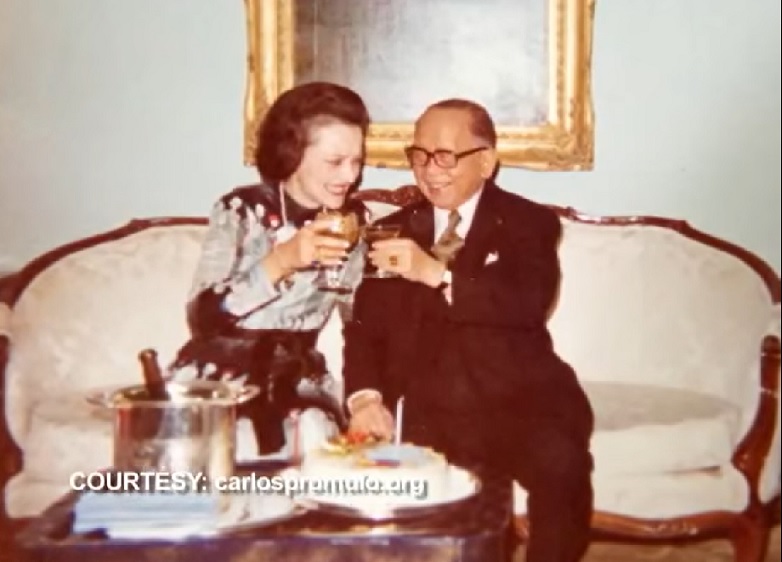“It is a pity that only the introduction to this book is signed by Carlos Romulo.” So began the anti-Marcos fighter Raul Manglapus in his 1975 review of the book authored by Beth Day Romulo, “The Philippines: Shattered Showcase of Democracy in Asia.” Published in the United States in 1974, only two years after the imposition of martial law, the book was written when the legendary Carlos P. Romulo was minister of foreign affairs in the Marcos cabinet.
If anything, the reader would not have second-guessed the sardonic path of the Manglapus review. “Romulo has been a Filipino legend in the international diplomatic community for over a quarter of a century. As ambassador and foreign secretary he has served every government since the founding of the Philippine Republic in 1946. And he has served brilliantly.”
Manglapus then pivots and his words suddenly spill into indignation. “The rest of the book is a pained and tortuous effort to explain why, after years of speaking out for human freedom – in World War II and until the early 1950s Romulo was known as the ‘voice of democracy’ – he has chosen not only to bow to, but to serve as an aggressive defender of the dictatorship of Ferdinand Marcos.”
Two clashing contexts have to be understood in that brief chapter of the life of Beth Day Romulo who died last November 11. At the time of his writing, Manglapus was in exile in the US, his wife and children forbidden by Marcos to rejoin him (they later did via the so-called “backdoor”). Beth Day Romulo was wife of Marcos’s foreign minister who was, in the words of Marcos critics, “so totally immersed in foreign affairs that he simply lost track of what was going on inside the country.”
That was not a generous comment for a man who was present in the MacArthur Landing in Leyte, to say nothing that he was the first Filipino to receive the Pulitzer Prize accolade in 1942, was president of the University of the Philippines (1962-1968), and a declared National Artist for Literature. His participation in the Marcos dictatorship became a blight to his stellar career.
The redemption was yet to come. Carlos P. Romulo resigned from the Marcos cabinet in 1983 soon after the assassination of Ninoy Aquino, citing poor health. But in an interview by writer Gregorio Brillantes the following year in 1984, Romulo said he resigned because he was “heartsick” at Ninoy’s assassination and the free fall of the country’s reputation before the world (Note: Like Ninoy, Romulo and Brillantes were Tarlaqueños).
The nagging question remained: what insider’s view did the world giant Carlos P. Romulo see in the Marcos Malacañang? It was Beth Day Romulo who answered the enigma. Almost a year after the Marcoses were unceremoniously ousted from their dictatorial perch, Beth Day Romulo wrote what appeared to be the Romulo couple’s front-row seat memoir of the Marcoses they had seen before their eyes.
Carlos P. Romulo, 87 years old, had died earlier in December of 1985, just before the Marcos snap election faux pas of February 1986. As intriguing as an insider’s view, Beth Day Romulo signaled the final Romulo break from the Marcoses. “Inside the Palace: The Rise and Fall of Ferdinand and Imelda Marcos” was published in New York as her ultimate statement of the Marcos dictatorship.
When the widower Romulo married the writer Beth Day in 1979, both were already individually famous. She was known as a writer of world affairs and was often published by Reader’s Digest. He was one of the signatories of the United Nations Charter and became the first Asian elected as president of the UN General Assembly.
Under martial law, nothing took place without Marcos’s knowledge. The conjugal dictators behaved like they owned the country. Even the Romulo marriage did not escape the dictator’s scrutiny. “To Marcos, our marriage was an international scandal waiting to happen. He saw it as a potential threat to his government’s ability to negotiate a new military base agreement with the US. He was adamantly opposed to it and wanted the relationship to end,” she said.
“Inside the Palace” provided one of the first glimpses, after the Edsa Revolution, of the Marcos influence and opulence. Imelda Marcos, for example, was said to believe in voodoo that she never gave away her yards and yards of gowns, afraid that they would end up as sorcery material.
Because of her presence as a cabinet minister’s wife, Mrs. Romulo witnessed Imelda’s shopping sprees in New York. She wrote that being close to Imelda was a cottage industry because not only was she a lavish spender, she was known as a gift-giver and a generous tipper.
Mrs. Romulo also wrote on how her husband was slowly edged out by Imelda’s growing “foreign affairs” portfolio. Her political machinations catapulted her as Ferdinand’s “ambassador” and she delighted being sent to foreign missions to meet world leaders. That did not speak well for the globally respected Carlos P. Romulo.
A footnote on Beth Day Romulo often overlooked is the fact that after she was widowed and after the fall of the Marcoses and the restoration of democracy, she never left the Philippines. She paid the price – she turned her back on the Marcoses (that so few of the Marcos cabinet ministers did) and she let the world know it.
The views in this column are those of the author and do not necessarily reflect the views of VERA Files.
